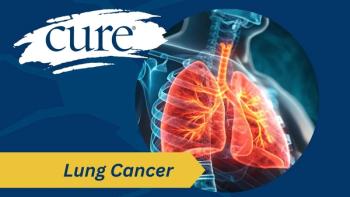
An ePatient's Search for Hope
Finding new treatment options for my metastatic lung cancer
The panic bowled me over like a 50-foot wave. Alone at home, I became a puddle of hopelessness--for about an hour. Then I shifted gears and got busy asking questions in an online lung cancer forum. The support I received there was essential for maintaining hope while I processed my new diagnosis. They helped me accept there was no point undergoing a risky lung surgery with a tough recovery when it wouldn’t cure me.
In Part 1 of my story,
In the next ten weeks, my mother died, I started taking prednisone for radiation pneumonitis, and a new three-inch tumor grew very visibly on my collarbone (close to my carotid artery). My extended family gathered for what we thought might be my last Thanksgiving. I had no desire to celebrate Christmas that year. My most memorable gifts were a newly installed power port and a hint that my hair was coming in curly.
In my online lung cancer forum, I learned about a clinical trial called the Lung Cancer Mutation Consortium Protocol. It tested lung cancer tumor tissue for mutations in ten different genes. I consulted with my Virginia Mason doctors, but they hadn't heard of it. I found the trial listing on clinicaltrials.gov, then contacted the trial sites until I found one accepting patients. The University of Colorado Cancer Center agreed to test my existing biopsy samples even though I could not fly to Denver due to concerns my hollow primary tumor might burst and cause my lung to collapse. My entire team was disappointed when all tests were negative. I continued networking with experienced lung cancer patients, and when my oncologist and I discussed chemo options, I suggested Avastin based on some new research. We mutually agreed on Alimta plus Avastin--he was willing to be more aggressive in my treatment because he knew I understood the risks.
Ten days after I started the new chemo in January, my collarbone tumor was visibly shrinking. I was extremely encouraged despite a sudden worsening of my pneumonitis and my new appreciation for ‘roid rage. Still, I was glad to finish chemo after six rounds -- I was losing my voice frequently, my nose bled daily, and toward the end I felt like I always had the flu. I began to understand how some people could decide to stop cancer treatment. But I couldn't argue with the results: all the original tumors were gone, the new tumor had shrunk 90 percent, and no new tumors appeared. We decided to treat this one remaining tumor as an oligo-metastasis and go for a possible cure--radiation therapy might knock my cancer out for good. My skin burned raw, but I made it through.
The next PET scan showed no activity around my collarbone. Yay! However...it also showed two new nodules in my "good" lung, both outside the radiation field. Seems I progress whenever I stop chemo. Another bronchoscopy was scheduled two weeks out, after my husband and I returned from a weekend with my nephew in Denver. I was anxious, but amazingly, not shocked. This time I was determined.
And here, thanks to research and clinical trials, the tone of my story changes.
On my last full day in Denver, I realized the University of Colorado Cancer Center was not far from my nephew’s house. I might be able to personally thank the people who had helped me get my previous mutation testing done. I sent an email Sunday afternoon, and was amazed to get an email back that evening saying I could meet the next day with Dr. Bunn, the Center's Director. He told me they could now test for additional mutations.
Months before, one of my online lung cancer friends had told me of a new lung cancer tumor mutation called ROS1. I fit the profile of typical patients who had it: relatively young never smoker, with adenocarcinoma lung cancer that tested negative for the more common mutations. My friend was in a Phase 1 ROS1 clinical trial which still had slots left, but at that time only a lab in Boston could test for the mutation. No one at my home hospital had heard of it, and they didn't know how to contact that Boston lab.
"Dr. Bunn," I asked, "can you test for ROS1?"
He said yes. I gave him permission to test my remaining slides.
(To be continued …)
Image Credit: University of Colorado Cancer Center




